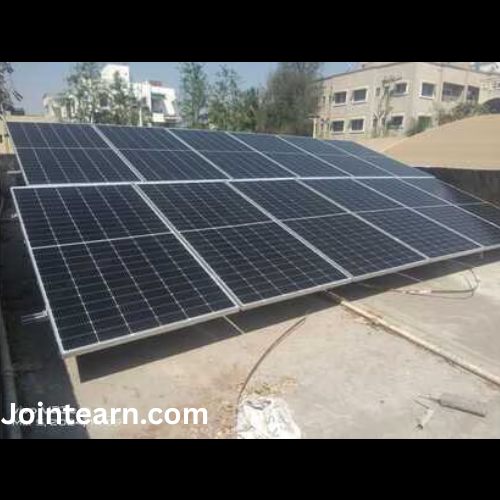The Indian Space Research Organisation (ISRO) achieved another milestone on Sunday with the successful launch of its communication satellite CMS-03 aboard the heavy-lift LVM3-M5 rocket, popularly known as ‘Bahubali’. The launch took place from the Satish Dhawan Space Centre (SDSC) in Sriharikota, Andhra Pradesh, marking another significant achievement in India’s rapidly expanding space capabilities. The event drew national attention not only because of the sheer scale of the rocket and satellite but also because of the symbolism it carried — a powerful testament to India’s growing self-reliance in space technology.
The launch of CMS-03 holds particular importance as it is one of the heaviest communication satellites ever launched from Indian soil. The satellite, weighing 4,410 kilograms, was lifted into space by the LVM3-M5, ISRO’s most powerful rocket, capable of placing payloads weighing over four tonnes into Geosynchronous Transfer Orbit (GTO). The mission represents India’s increasing capacity to handle heavy payloads independently, a feat that until recently required the use of foreign launchers, particularly from the European space agency Arianespace.
The 24-hour countdown for the mission began on Saturday at 5:26 pm. ISRO scientists monitored each stage closely, ensuring that all systems were functioning normally. The space agency provided periodic updates confirming that the countdown was progressing smoothly. On Sunday, final launch procedures began at 4:56 pm, and the much-awaited lift-off occurred at precisely 5:26 pm IST from the second launch pad at Sriharikota. The successful ignition and smooth ascent of the LVM3-M5 were met with applause at the Mission Control Centre, as ISRO officials and engineers watched the rocket pierce through the evening sky carrying the CMS-03 satellite to its intended orbit.
CMS-03 is designed to provide advanced communication services across the Indian subcontinent and surrounding regions. Built to operate in the geostationary orbit, the satellite is expected to enhance broadband connectivity, television broadcasting, and secure communication networks for both civilian and defense applications. It is a critical part of India’s broader goal of creating robust communication infrastructure in space, ensuring uninterrupted services even in remote regions where terrestrial networks struggle to reach.
This mission is particularly significant for ISRO because of its complete reliance on indigenous technology. For decades, India depended on Arianespace’s Ariane rockets for deploying heavy communication satellites into orbit. The decision to develop and perfect its own heavy-lift vehicle stemmed from both strategic and economic reasons. Launching satellites aboard foreign rockets involved high costs and limited autonomy in scheduling missions. The LVM3 — or Launch Vehicle Mark 3 — was designed to fill this crucial gap, giving India the ability to launch heavy payloads without foreign assistance.
The LVM3-M5, standing at an impressive height of 43.5 metres (approximately equivalent to a 15-storey building), has been affectionately nicknamed ‘Bahubali’ by ISRO scientists, a reference to the legendary Indian warrior renowned for his strength. The nickname is a nod to the rocket’s powerful lifting capacity and its role as ISRO’s flagship vehicle for ambitious missions. The rocket’s three-stage design allows it to deliver both precision and power, making it suitable for placing satellites in a variety of orbits, including GTO and Low Earth Orbit (LEO).
The first stage of the LVM3 consists of two massive solid strap-on boosters known as S200s, attached on either side of the rocket’s core. Each of these boosters generates about 5,150 kilonewtons of thrust, providing the immense power required to lift the rocket off the launch pad and propel it through the dense lower layers of the atmosphere. The combined thrust from these two boosters is what gives the LVM3 its initial lift-off force, a defining characteristic of its ‘Bahubali’ persona.
The second stage, called the L110, is a liquid propellant core stage powered by two Vikas engines that use a mixture of unsymmetrical dimethylhydrazine (UDMH) and nitrogen tetroxide as fuel. This stage takes over once the solid boosters detach, continuing the ascent and stabilizing the trajectory toward orbit. The third and final stage is the cryogenic upper stage, designated C25, which operates on liquid hydrogen and liquid oxygen. This cryogenic stage, one of the most complex engineering achievements for ISRO, plays a crucial role in precisely inserting the payload into its designated orbit. It provides the final thrust required to place the satellite into a Geosynchronous Transfer Orbit from where the satellite can maneuver into its final geostationary position.
The LVM3’s versatility is one of its greatest strengths. Apart from its ability to carry communication satellites weighing up to 4,000 kilograms into GTO, it can also lift payloads of up to 8,000 kilograms into Low Earth Orbit. This makes it the backbone of ISRO’s future deep-space missions as well, including crewed spaceflights under the Gaganyaan program and potential lunar and interplanetary exploration missions.
The launch of CMS-03 was LVM3’s fifth operational flight, marking another step forward in consolidating the rocket’s reputation as a reliable workhorse. Its previous missions include launching satellites for both domestic and international customers, as well as deploying India’s Chandrayaan-2 lunar mission in 2019 and carrying the OneWeb satellites for global broadband connectivity in 2022 and 2023. Each mission has strengthened ISRO’s confidence in the vehicle’s performance and reliability.
According to ISRO officials, the CMS-03 satellite’s deployment will significantly enhance India’s communication infrastructure. It is designed to support multiple transponders and operate across various frequency bands, providing wide coverage and strong signal integrity. The satellite will ensure uninterrupted telecommunication services, improve internet bandwidth, and strengthen broadcasting capabilities for both government and private networks. It will also play a role in disaster management, enabling real-time communication during emergencies.
One of the key technological highlights of CMS-03 is its payload configuration, which enables it to serve both civilian and defense communication needs. It will also provide crucial support for tele-education, telemedicine, and e-governance services across India’s rural and remote regions, thereby contributing directly to the government’s Digital India initiative. The satellite’s operational lifespan is expected to extend beyond 12 years, ensuring long-term benefits for the nation’s communication infrastructure.
The successful execution of this mission once again demonstrates ISRO’s growing expertise in handling complex launches with indigenous technology. It also underscores India’s determination to emerge as a global player in the commercial satellite launch market. By mastering heavy-lift launch capabilities, ISRO not only saves valuable foreign exchange but also opens new avenues for international collaborations and commercial contracts.
Sunday’s launch is seen as a reaffirmation of India’s position as a spacefaring nation capable of executing challenging missions with precision and efficiency. Over the past decade, ISRO has built an impressive track record, from the Mars Orbiter Mission to Chandrayaan-3’s successful lunar landing. The CMS-03 mission further strengthens that legacy by expanding India’s communication infrastructure and reinforcing its self-reliance in critical technologies.
With each successful launch, ISRO continues to demonstrate that it is not only keeping pace with the world’s leading space agencies but also setting benchmarks in cost-effective innovation. The LVM3’s success signifies a new chapter in India’s space journey — one that emphasizes autonomy, ambition, and global competitiveness. As CMS-03 begins its mission in orbit, it represents more than just a technological success; it stands as a symbol of national pride and scientific achievement, highlighting how far India’s space program has come and how much further it aims to go.


Leave a Reply